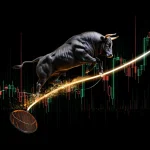
According To The Dow Theory, Reversal Of A Primary Bullish Trend Must Be Confirmed By DJTA
Sept 30, 2024
Introduction to Dow Theory
Dow Theory, a cornerstone of technical analysis in financial markets, was developed by Charles H. Dow, the co-founder of Dow Jones & Company and the creator of the Wall Street Journal. The theory comprises a series of principles for understanding and analyzing market behaviour, which was extracted from Dow’s editorials in the Wall Street Journal. Despite being over a century old, Dow Theory remains relevant, providing a foundation for modern technical analysis.
How Dow Theory Works
Dow Theory is built on six basic tenets that help in understanding market trends:
1. The Market Discounts Everything: The market already prices all information, including public and private knowledge.
2. The Market Has Three Trends: Primary (long-term), Secondary (medium-term), and Minor (short-term) trends.
3. Primary Trends Have Three Phases: Accumulation, Public Participation, and Distribution.
4. Indices Must Confirm Each Other: The Dow Jones Industrial Average (DJIA) and the Dow Jones Transportation Average (DJTA) must sync to confirm a trend.
5. Volume Must Confirm the Trend: Volume should increase toward the primary trend.
6. Trends Persist Until a Clear Reversal Occurs: A trend remains in effect until a clear signal of its reversal.
Charles H. Dow: The Founder
Charles H. Dow, born in 1851, was a journalist and financial analyst who co-founded Dow Jones & Company in 1882. He is best known for creating the Dow Jones Industrial Average (DJIA) and for his pioneering work in developing Dow Theory. Dow’s insights into market behaviour laid the groundwork for technical analysis and continue influencing traders and investors worldwide.
Reversal of a Primary Bullish Trend According to Dow Theory
According to Dow Theory, a reversal of a primary bullish trend must be confirmed by a series of signals. First, the market must decline and break the previous low. Second, a rally must fail to surpass the last high and be followed by another decline that breaks the previous low. This sequence of lower highs and lower lows indicates a trend reversal from bullish to bearish.
The Sequence of Lower Highs and Lower Lows
1. Initial Decline Breaking the Previous Low: The first signal of a potential trend reversal is a market decline that breaks the previous low. This indicates that the bullish momentum is weakening. For instance, if the DJIA has been making higher highs and higher lows, a break below the last significant low suggests that the buyers are losing control.
2. Failed Rally: After the initial decline, the market often attempts to rally. However, this rally must fail to surpass the previous high for a trend reversal to be confirmed. This failure indicates that the buying pressure is insufficient to push prices higher, and the market sentiment is shifting from bullish to bearish.
3. Subsequent Decline Breaking the Previous Low: The final confirmation comes when the market declines again and breaks below the previous low established during the initial decline. This sequence of lower highs and lower lows is a classic Dow Theory signal that the primary bullish trend has reversed to a bearish trend.
Importance of Volume
Volume plays a critical role in confirming trend reversals. According to Dow Theory, volume should increase toward the primary trend. In a bullish market, buying volume should rise as prices increase and fall during pullbacks. Conversely, selling volume should increase during a trend reversal during declines, indicating that more market participants are turning bearish.
Confirmation Across Indices
Dow Theory emphasizes the need for confirmation across different indices. For a trend reversal to be valid, both the Dow Jones Industrial Average (DJIA) and the Dow Jones Transportation Average (DJTA) must exhibit the same pattern of lower highs and lower lows. This dual confirmation helps to filter out false signals and provides a more robust indication of a trend reversal.
Historical Examples
Example 1: The Great Depression (1929-1932)
During the Great Depression, the DJIA exhibited a classic Dow Theory reversal pattern. After reaching a peak in September 1929, the market began to decline, breaking previous lows. Subsequent rallies failed to surpass previous highs, and further declines broke new lows, confirming the reversal from a bullish to a bearish trend. The DJTA mirrored this pattern, providing the necessary confirmation.
Example 2: The Dot-Com Bubble (2000-2002)
The bursting of the dot-com bubble also followed the Dow Theory principles. After peaking in early 2000, the DJIA and DJTA both showed a series of lower highs and lower lows. The initial decline broke previous lows, and subsequent rallies failed to reach new highs. The final confirmation came with further declines breaking new lows, signalling a shift to a bearish trend.
Challenges in Identifying Reversals
One of the challenges in applying Dow Theory is distinguishing between a primary trend reversal and a secondary trend or pullback. Secondary trends are shorter-term movements that go against the primary trend but do not signify a complete reversal. Investors must be cautious and look for clear signals, such as the sequence of lower highs and lower lows, to confirm a primary trend reversal.
Tactical Investor’s Alternative Dow Theory
While Dow Theory has endured, some investors believe there are better alternatives. For instance, the Tactical Investor’s Alternative Dow Theory focuses on the Dow Jones Utilities Average (DJU) for signals. This theory posits that the utilities sector leads the broader market, providing early signals for market reversals.
The Significance of the Utilities Sector
The utilities sector, represented by the Dow Jones Utilities Average (DJU), comprises companies that provide essential services such as electricity, gas, and water. These companies are often considered defensive investments due to their stable cash flows and consistent dividend payments. The Tactical Investor’s Alternative Dow Theory suggests that the utility sector is a leading indicator for the broader market due to its sensitivity to changes in interest rates and economic conditions.
How the DJU Provides Early Signals
1. Interest Rate Sensitivity: Utility companies are capital-intensive businesses that rely heavily on debt financing. As a result, they are sensitive to changes in interest rates. When interest rates rise, utilities’ borrowing costs increase, potentially impacting profitability. Conversely, utilities can benefit from lower borrowing costs and improved margins when interest rates fall. The DJU tends to react quickly to changes in interest rate expectations, providing an early signal for the broader market.
2. Economic Sensitivity: The demand for utility services is inelastic, as consumers and businesses require these services regardless of economic conditions. However, during economic downturns, utilities may face challenges such as reduced industrial demand and increased customer defaults. The DJU can provide insights into the economy’s health, as a weakening utilities sector may signal a broader economic slowdown.
3. Relative Performance: The Tactical Investor’s Alternative Dow Theory suggests that the DJU’s relative performance compared to the broader market can provide valuable insights. When the DJU outperforms the Dow Jones Industrial Average (DJIA) or other broad market indices, it may indicate a defensive market sentiment and a potential shift towards more conservative investments. Conversely, when the DJU underperforms, it may signal a more risk-on market environment.
Historical Examples
Example 1: The 2008 Financial Crisis
During the 2008 financial crisis, the DJU provided early warning signs of the impending market downturn. Several months before the crisis peaked, the utilities sector began underperforming the broader market. This divergence between the DJU and the DJIA signalled that investors were becoming more risk-averse and seeking defensive investments.
Example 2: The COVID-19 Pandemic
In the early stages of the COVID-19 pandemic 2020, the DJU demonstrated its potential as a leading indicator. As concerns about the pandemic’s economic impact grew, the utility sector outperformed the broader market, signalling a flight to safety among investors. The DJU’s relative strength during this period provided an early indication of the market’s defensive posture.
Incorporating the DJU into Investment Strategies
Investors can use the Tactical Investor’s Alternative Dow Theory to inform their investment decisions by monitoring the DJU’s performance and relationship to the broader market. When the DJU shows relative strength, a more defensive investment approach may be prudent, focusing on stable, income-generating assets. Conversely, when the DJU lags the broader market, it may be an opportune time to consider more aggressive, growth-oriented investments.
It’s important to note that the Tactical Investor’s Alternative Dow Theory should not be used in isolation but as part of a comprehensive investment strategy considering multiple factors, such as economic fundamentals, market valuations, and risk tolerance.
Enhancing Results with Mass Psychology
Combining the Tactical Investor’s Alternative Dow Theory with Mass Psychology can improve investment outcomes. Mass Psychology involves understanding the behaviour and sentiment of the general public, which can often be irrational and driven by emotions such as fear and greed.
When the masses are in a state of panic, it often presents a contrarian investment opportunity. Conversely, when the masses are overly optimistic, it may be a signal to exercise caution.
Example 1: Panic During the 2008 Financial Crisis
During the 2008 financial crisis, widespread panic led to massive sell-offs. However, the DJU’s early recovery signal and the understanding that panic often creates buying opportunities allowed savvy investors to enter the market at attractive valuations. Those who followed this approach reaped significant gains as the market recovered.
Example 2: Euphoria During the Dot-Com Bubble
In the late 1990s, the dot-com bubble was characterized by irrational exuberance and sky-high valuations. Despite this bullish sentiment, the DJU began to show signs of weakness. Investors who combined this early signal with the understanding that mass euphoria often precedes market corrections avoided substantial losses when the bubble burst in 2000.
Conclusion
The Tactical Investor’s Alternative Dow Theory offers a unique perspective on market analysis by focusing on the Dow Jones Utilities Average (DJU) as a leading indicator. By monitoring the performance of the utility sector and its relationship to the broader market, investors can gain valuable insights into market sentiment and potential trend reversals. Historical examples, such as the 2008 financial crisis and the COVID-19 pandemic, demonstrate the effectiveness of the DJU in providing early warning signs. While the Tactical Investor’s Alternative Dow Theory should not be relied upon exclusively, it can be a valuable tool for investors seeking to navigate the complexities of the financial markets and make more informed investment decisions.
See it big, and keep it simple. Wilferd A. Peterson
Curated Curiosities: Exceptional Articles Worth Your Time
Introduction to Mass Psychology
FAQ: According To The Dow Theory, Reversal Of A Primary Bullish Trend Must Be Confirmed By?
1. What is the key principle of Dow Theory regarding the reversal of a primary bullish trend?
According to Dow Theory, reversal of a primary bullish trend must be confirmed by a series of lower highs and lower lows. The market must first decline below the previous low, followed by a rally that fails to surpass the previous high, and then another decline that breaks the low set by the initial decline.
2. How does the Tactical Investor’s Alternative Dow Theory differ from the original Dow Theory?
The Tactical Investor’s Alternative Dow Theory focuses on the Dow Jones Utilities Average (DJU) as a leading indicator for market reversals rather than relying solely on the Dow Jones Industrial Average (DJIA) and the Dow Jones Transportation Average (DJTA) as the original Dow Theory does. This alternative theory suggests that the utilities sector provides early signals for broader market trends.
3. What role does volume play in confirming a trend reversal according to Dow Theory?
According to Dow Theory, the reversal of a primary bullish trend must be confirmed by increased volume in the direction of the new bearish trend. During the reversal process, selling volume should increase during market declines, indicating a shift in market sentiment from bullish to bearish. Volume confirmation helps to validate the authenticity of the trend reversal signal.












